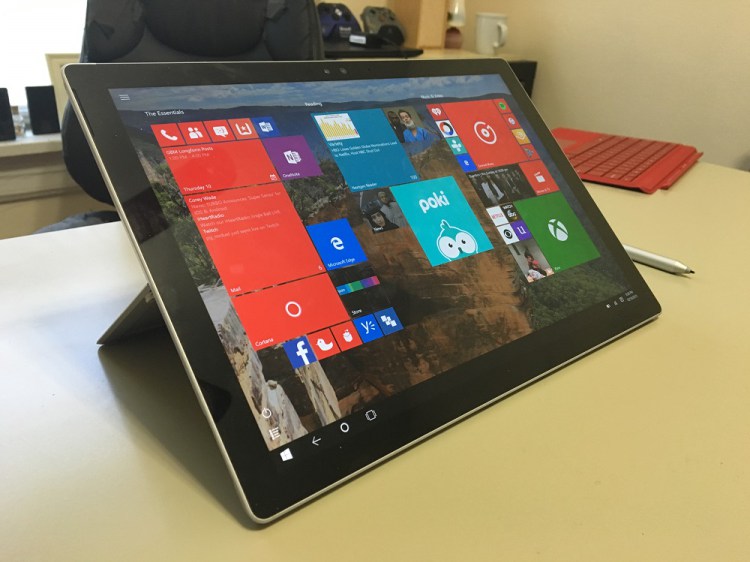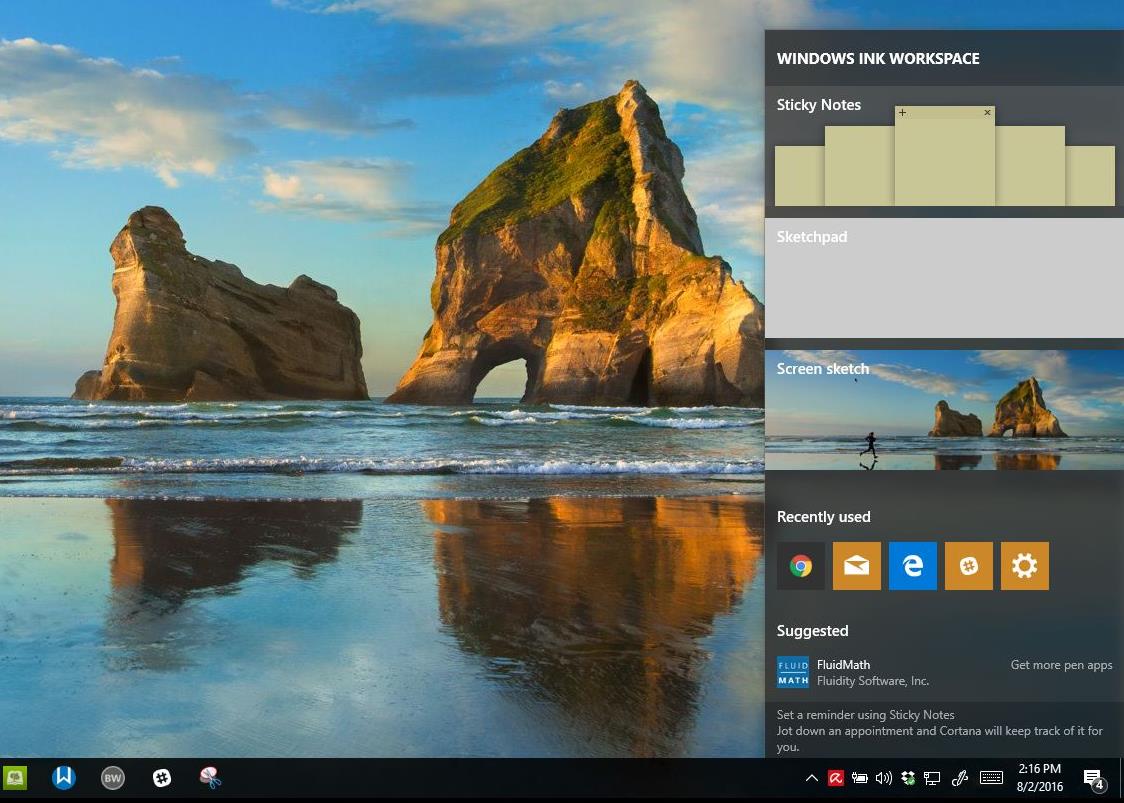We recently took a look at installing the Windows 7 using a Clean/Custom Install scenario. This next article will involve doing an in-place upgrade from an existing version of Windows such as Windows Vista SP1 to Windows 7.
What is an in-place upgrade and should I do it?
Upgrading to Windows 7 requires that you replace your existing installation of Windows Vista by doing what is known as an in place upgradeâ€. The installation process replaces Windows Vista files and retains your installed applications, personal files and settings. Of course, this requires careful thought and planning.
1. Checking to make sure that all your installed applications and existing hardware devices are compatible.
2. Acquire any necessary updates that you might need to apply before upgrading to ensure your existing applications and hardware devices function after installing Windows 7.
3. Ensuring that there is enough Disk space to store temporary files and the operating system in addition to your applications and files.
4. Enough memory to efficiently run the operating system and your applications.
5. Acceptable processor speed.
If you meet the above requirements, you should not have a problem.
Which version and editions of Windows can I do an in-place upgrade from to Windows 7?
Windows 7 supports upgrading from Windows Vista SP1 or later. Windows XP users who will be eligible for upgrade pricing to Windows 7 will however have to do a clean installation which involves backing up your personal data and reinstalling applications and devices drivers on Windows 7 or use the free Windows Easy Transfer utility to transfer files from a computer running either Vista or XP to a computer running Windows 7. I will take a look at using Easy Transfer in a future post, stay tuned!
Note: Upgrades are not supported for Windows XP Professional x64 Edition at all; Windows 7 x64 requires a clean installation. Users of Windows Vista SP1 x64 can do in place upgrades to Windows 7 x64.
Learn more about Windows 7 upgrade paths here
Upgrade eligibility
Because no one outside of Microsoft has access to the Windows 7 Upgrade DVD to know entirely how it actually works, there are rumored to be some changes to how you can install it. A Microsoft representitive informed Windows blogger, Paul Thurrott about how the Windows 7 Upgrade media works:
In order to install the upgrade version of Windows 7, you must have a qualifying Windows operating system installed and activated. You cannot install an upgrade version of Windows 7 on a blank hard drive. The installation procedure does not ask you to insert a Windows disc in the drive for verification, the actual qualifying operating system must be installed.
If you do not have a qualifying Windows operating system installed with a genuine license activated, then you cannot use the upgrade version of Windows 7 – you would need a “full version” Windows 7 license.
In summary:
1. A qualifying Windows operating system must be installed.
2. The qualifying Windows operating system must have a genuine license (product key) and it must be activated.
3. To upgrade, boot to the qualifying Windows desktop, insert the Windows 7 Upgrade disc in the DVD drive.
4. When the setup menu appears, select Custom (advanced) to initiate a clean install procedure.
Source here
There are still some questions that are unanswered such as what will happen if I need to reinstall Windows 7 in the future or system crashes? Will I need to reinstall the qualifying operating system then install Windows 7 again? Will I have to reactivate again?
A lot of unanswered questions. Users should note, you will be able to repair the installation if your install does crash. I also would suggest you create a System Image (backup) of your Windows 7 installation after installing Windows 7 to save you the trouble if your computer does crash in the future. Will take a look at doing this in a future post.
Starting the Upgrade:
Similar to starting a Clean installation, you click the Install Windows Now button on the Install Windows window. Setup will start copying temporary files that assist the installation of the operating system. If you have installed Windows Vista before, the procedure is pretty much identical. Please note, that I started my installation from within a running installation of Windows Vista. If you are doing a clean install, you can boot from your Windows 7 disk and proceed with installation. If you are planning on upgrading from Windows Vista, you must launch Windows 7 setup from within a running installation of Vista.
The Upgrade Option
Upgrading to Windows 7
Compatibility Checking and Results.
When you click the Upgrade option, Windows 7 setup will run a series of Compatibility Checks to inform you of any possible problems that you might experience with devices or applications during or after upgrading. As you can see in the above screenshots, I had a few, lets see what they said:
Upgrading Windows will affect the following features:
- Offline files on this computer will not be available until the computer is connected to the server after the upgrade. Offline files will automatically sync at that time.
- Windows Mail is no longer included in Windows; however your e-mail files and settings will still be available after the upgrade. To send and receive e-mail you will need to install a new e-mail program. You can get e-mail programs from other software manufacturers or from the Microsoft website.
- Windows Vista Ultimate Extras have been discontinued and will no longer be available after upgrading to Windows 7.
Upgrading Windows will affect the following devices and/or programs:
These devices might not work properly after the upgrade. Before upgrading, we recommend updating the drivers for these devices. Cancel the upgrade, open Control Panel and search for “update device drivers”, or go to the device manufacturer’s website to search for updated drivers.
-
- Infrared devices: IrDA Fast Infrared Port #2
- Storage controllers: A2RB9GXT IDE Controller
These programs might not work properly after the upgrade. We recommend uninstalling these programs before upgrading. Cancel the upgrade, open Control Panel, and search for “uninstall a program”. (Note: Programs marked as * can be safely reinstalled after the upgrade.)
-
- ATI CATALYST Install Manager *
- Daemon Tools
- Virtual PC 2007 SP1 *
- VMware Player *
So, the report does not look too bad especially where applications are concerned. Customers of Windows Vista Ultimate must be aware, that Ultimate Extras content such as DreamScenes animated wallpapers and games such as Texas Hold ‘Em Poker and Tinker will not be preserved. (Which is unfortunate personally). Since I have accepted the results, I will move forward with upgrading.
Now here is something that is slightly different about upgrading and some key differences when upgrading to Windows 7.
Detailed information
The Windows Team has made installing Windows a bit more informative, detailing the various steps of what happens during an upgrade. What’s also interesting is the ‘Copying Windows installation files to your computer (27 of 2772 MB copied) indication. Its the first time I am seeing this and I find it a welcome change that actually keeps the user in the know about what is going on. During the upgrade, which took several hours on my system (nearly 4 hours to be exact), you will see a lot of details about Files, Settings and Programs being transferred with numbers ranging in the hundreds of thousands. It might seem like the upgrade will take a very long time, but do not worry, Windows 7 will quickly jump over hundred’s of thousand files at various points during the install.
Upgrading is a complex and timely process. I do not recommend doing this in the middle of a project or on a week day. The weekend is recommended, you can also leave Windows 7 to handle the upgrade while you go take a walk, watch a movie or some other activity while the upgrade do its thing.
During the upgrade, Windows 7 will restart several times, apply registry settings and test your video hardware performance. You are given the option to Roll back to your previous version of Windows up to the point of Transferring files, settings and programs, after Windows 7 restarts during this phase of installation.
Out of Box Experience (OOBE)
Once Windows 7 has completed the upgrade, you are taken to the OOBE, which consist of post installation task such as entering a product key for the edition of Windows 7 you installed and joining a network. After these quick task have been completed, Windows 7 applies settings and prepares to load the Desktop for the first time.
After reaching the Desktop, Windows 7 will do a series of configurations such as applying personalized settings for Windows Media Player and Windows Desktop Update. And that’s it, you have successfully upgraded to Windows 7.
Some discoveries:
- If you are wondering what happened to your Sticky Notes Gadgets, they will be migrated to the new Sticky Notes application in Windows 7.
Conclusion
I have heard a lot about upgrading to newer versions of Windows and the potential for problems with persons most times recommending a clean install instead. Windows 7 is an exception in this case and I can see that the Windows Team has done some significant work to ensure that the transition from Windows Vista SP1 is a smooth one. Of course, there will always be potential hiccups, but with careful planning and a small amount of patience, upgrading to Windows 7 can be as smooth as its intended to be. I definitely give Windows 7 a thumbs up in this regard!
I have put together a list of things you should take into account before installing or upgrading to Windows 7 RTM.
- You have two choices, you can either upgrade from Windows Vista SP1 by launching setup from within Windows and choose the upgrade option during the installation wizard; (Windows 7 requires that you have a minimum 16 GB’s of free disk space before upgrading, 20 GBs if you are running 64 bit.). Note: Upgrades are not supported for Windows XP Professional x64 Edition at all; Windows 7 x64 requires a clean installation. Users of Windows Vista SP1 x64 can do in place upgrades to Windows 7 x64.
- Get Religion: Backup, Backup, Backup!As Murphy Law states, if it can go wrong, it will. Upgrading is a very complex process and there are often cases of failed upgrades from older versions of Windows especially with Windows 7 still pre-release software. Causes can include, power outage during installation, hardware or application conflict. This is why you should always back upâ€, it’s better to be inconvenienced than having to start all over from scratch.
- If you are upgrading/clean install, disable any external or USB based devices you might have attached to the computer. Also, disable any Security software before launching setup and ensure that you meet the minimum system requirements for Windows 7.
1 GHz processor (32-bit or 64-bit)
1 GB of system memory (2 GBs for 64 bit)
16 GBs of disk space (20 GBs for 64 bit) Windows 7 uses approximately 10.5 GBs of disk space.
DirectX 9 graphics with 128 MB of memory
DVD Burner and Internet access
Technical knowhow to burn an ISO file to make an install DVD if Windows 7 was purchased digitally.
- You cannot uninstall Windows 7, if you need to use XP or Vista, you will have to reinstall it. If you are uncertain about upgrading to Windows 7, it’s always best to do a dual boot installation by installing Windows 7 on a logical partition or another hard disk.
- Some of my devices and applications are not working, what should I do?If your Internet connection is working in Windows 7, I suggest you try obtaining the drivers through Windows Update. Click Start > All Programs > Windows Update > Turn on Windows Update. A list of available updates will then be downloaded, you will have the option to view them, do so and check off the appropriate drivers or software patches you need and click Install. You can also check the manufacturer’s website for patches, updated drivers or to simply find out about Windows 7 support for the particular product.
For software, if you are running Windows 7 x64, certain types of applications will not work; these include Win16 applications and Win32 applications that use Win16 installers. You can also try running the application in Compatibility mode to see if it will work (full 32-bit application applications supported). Right click the programs executable > click Properties > Compatibility†tab > under Compatibility Mode†check the Run this application in compatibility mode for: box > click in the list box and choose a suitable version of Windows.
Learn more: Windows XP Mode for Windows 7
Certain applications might encounter problems with the User Account Control security component in Windows 7 because the application was designed to run with Administrative privileges. You can try a work around by, right clicking the applications executable and click Run as Administrator†on the context menu.
Resources:
KB971762 How to uninstall Windows 7
KB971760 How to restore a Windows 7-based computer to a previous Windows installation by using the Windows.old folder
KB971759 How to back up your data on a Windows-based computer


